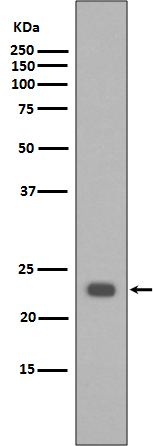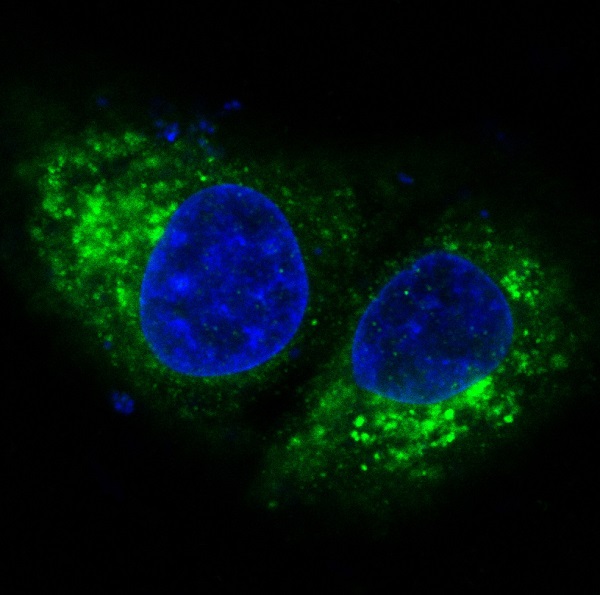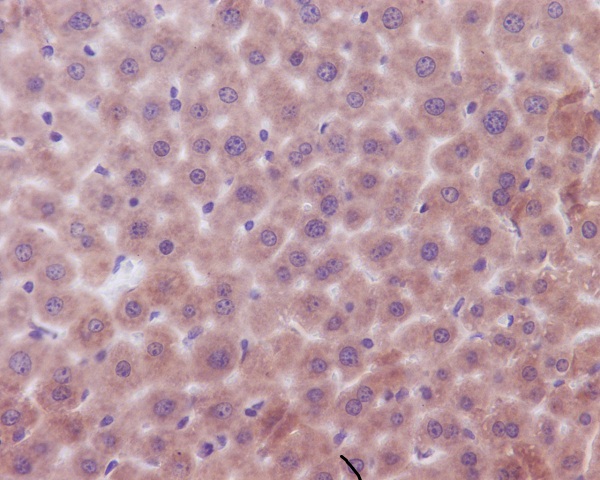


| WB | 咨询技术 | Human,Mouse,Rat |
| IF | 1/20 | Human,Mouse,Rat |
| IHC | 1/50-1/100 | Human,Mouse,Rat |
| ICC | 1/50-1/200 | Human,Mouse,Rat |
| FCM | 1/50-1/100 | Human,Mouse,Rat |
| Elisa | 咨询技术 | Human,Mouse,Rat |
| Aliases | BAK1; BAK; BCL2L7; CDN1; Bcl-2 homologous antagonist/killer; Apoptosis regulator BAK; Bcl-2-like protein 7; Bcl2-L-7 |
| Entrez GeneID | 578 |
| WB Predicted band size | Calculated MW: 23 kDa; Observed MW: 23 kDa |
| Host/Isotype | Rabbit IgG |
| Antibody Type | Primary antibody |
| Storage | Store at 4°C short term. Aliquot and store at -20°C long term. Avoid freeze/thaw cycles. |
| Species Reactivity | Human,Mouse |
| Immunogen | A synthesized peptide derived from human Bak |
| Formulation | Purified antibody in PBS with 0.05% sodium azide. |
+ +
1. **"Bak: a downstream mediator of apoptosis in Fas-induced cell death"**
*作者:S. J. Korsmeyer, M. C. Wei, et al.*
摘要:探讨Bak蛋白在Fas信号通路中的促凋亡作用,利用特异性抗体验证Bak在细胞死亡中的激活机制及与Bcl-2家族其他成员的相互作用。
2. **"Structural insights into Bak activation by apoptotic stimuli"**
*作者:D. C. S. Huang, A. Strasser*
摘要:通过X射线晶体学结合抗体标记技术,揭示Bak蛋白在凋亡信号下构象变化的分子机制,阐明其寡聚化在线粒体膜透化中的关键角色。
3. **"Bak antibody-based detection of mitochondrial apoptosis in cancer models"**
*作者:R. J. Youle, E. H. Cheng*
摘要:研究多种癌细胞系中Bak的表达水平与化疗敏感性关联,使用Bak特异性抗体进行免疫印迹分析,证明Bak激活是化疗诱导凋亡的重要标志。
4. **"Tissue-specific regulation of Bak by phosphorylation and its implications in neurodegenerative diseases"**
*作者:L. Scorrano, M. Piacentini*
摘要:利用磷酸化特异性Bak抗体,揭示神经元中Bak的翻译后修饰调控机制,及其在阿尔茨海默病模型中线粒体功能障碍中的作用。
Bak (Bcl-2 homologous antagonist/killer) is a pro-apoptotic protein belonging to the Bcl-2 family, which regulates mitochondrial-dependent programmed cell death. Discovered in the mid-1990s, Bak plays a critical role in initiating apoptosis by promoting mitochondrial outer membrane permeabilization (MOMP), a key step in releasing cytochrome *c* and activating caspases. Structurally, Bak contains BH1. BH2. and BH3 domains that enable interactions with anti-apoptotic family members (e.g., Bcl-2. Bcl-xL) and other pro-apoptotic proteins like Bax. Under normal conditions, Bak remains inactive, bound to the mitochondrial membrane. Apoptotic stimuli trigger conformational changes, leading to Bak oligomerization and MOMP.
Antibodies targeting Bak are essential tools in apoptosis research. They are widely used in techniques like Western blotting, immunohistochemistry, and flow cytometry to detect Bak expression, localization, and activation status in cells or tissues. These antibodies help elucidate Bak's role in diseases, particularly cancer (where dysregulation contributes to resistance to apoptosis) and neurodegenerative disorders. Commercial Bak antibodies vary in specificity, targeting distinct epitopes (e.g., N-terminal, C-terminal) or post-translational modifications. Validation is critical, as cross-reactivity with homologous proteins like Bax can occur. Research applications include studying Bak-Bax synergy, interactions with viral proteins that inhibit apoptosis, and therapeutic strategies targeting Bcl-2 family dynamics. Bak antibodies thus serve as pivotal reagents in understanding cell death mechanisms and developing apoptosis-modulating therapies.
×